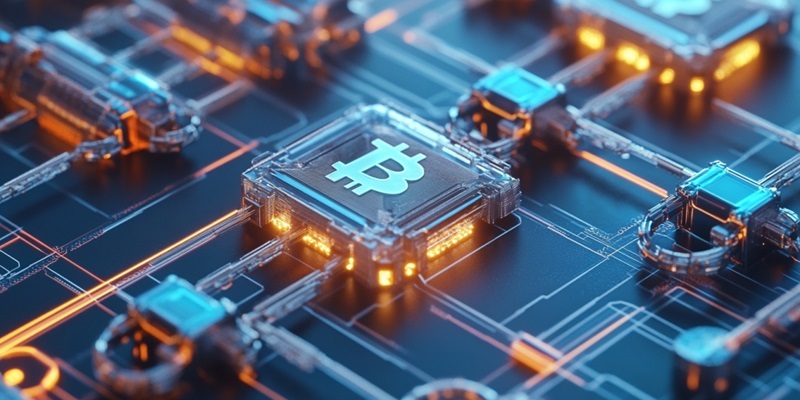In the fast-paced world of blockchain technology, the recent disabling of public remote procedure call (RPC) access by Uniswap Labs’ Unichain project has stirred up significant controversy and unrest among its user base. The Unichain, launched in early October, initially promised cutting-edge capabilities such as 250ms block times, seamless cross-chain connectivity, and a decentralized validator network. However, just two days after its launch, an unforeseen event involving a developer access detail leak allowed a group of proficient users to exploit the Layer 2 network before the official release, leading to a spike in memecoin creation and trading activities. In response, the Unichain team took the drastic measure of disabling public RPC access, which has left many users frustrated and uncertain about the project’s direction and stability.
The Immediate Aftermath
Disabling Public RPC Access
The abrupt decision to disable public remote procedure call (RPC) access by the Unichain team has not gone over well with its users, who have voiced their frustration and concerns over the sudden shutdown. Following the developer access detail leak that allowed early exploitation of the Layer 2 network, Unichain decided to cut off public RPC access to prevent unauthorized actions. This move, while aimed at protecting the network’s integrity, has left users in a state of confusion and disappointment.
Users have expressed their dissatisfaction with the decision on various platforms, particularly on X (formerly known as Twitter), voicing their concerns about the lack of communication and available alternatives. One user questioned how they were expected to bridge funds without active RPC access, highlighting the importance of such functionality for seamless transactions. Another criticized the apparent lack of foresight in making such a decision without providing alternative solutions for users. The outcry underscores the significance of maintaining clear communication and contingency plans when managing a project as critical as a blockchain network.
Furthermore, the mainnet remains offline, and the canonical bridge essential for cross-chain transactions is incomplete, adding to the uncertainty and frustration among users. Despite assurances from Unichain about forthcoming updates and eventual restoration of public RPC access details, confidence in the project has been shaken. The team’s handling of the situation has prompted questions about the project’s preparedness and the strategic decisions made in the wake of the breach.
Concerns About Preparedness and Planning
The incident has not only raised concerns about the immediate security and stability of the Unichain project but has also sparked broader discussions about the overall preparedness and strategic planning of such blockchain initiatives. Critics have noted that disabling public RPC access in response to a security breach sets a troubling precedent for future projects, potentially undermining user confidence across the blockchain community.
Tom Kyser, the founder of Gas.zip, emphasized that while early access issues are relatively common in the blockchain space, no other project has resorted to completely disabling RPC access as a countermeasure. Kyser’s comments highlight a key concern: the balance between ensuring security and maintaining accessibility should be carefully managed, and Unichain’s approach might have been an overreaction. Additionally, Kyser pointed out that even if developers allow canonical withdrawal transactions, it remains uncertain whether users will successfully bridge their funds away from Unichain, highlighting the potential long-term ramifications of the RPC shutdown.
The criticism directed at Unichain for its perceived lack of foresight and preparedness underscores the importance of comprehensive planning and having robust contingency measures in place. In the highly dynamic and often volatile blockchain environment, project teams must anticipate and mitigate potential risks while ensuring that users remain informed and supported throughout any disruptions.
Broader Implications
Security Versus Accessibility
The controversy surrounding the Unichain project’s handling of the developer access detail leak and subsequent RPC shutdown illustrates a broader challenge faced by the blockchain community: striking the right balance between security and accessibility. The decision to disable critical network functions in response to security breaches has raised important questions about the viability of such a strategy and its potential impact on user trust and confidence.
Ensuring that a blockchain network remains secure is paramount; however, it must not come at the cost of accessibility and usability. The Unichain incident has brought to light the difficulties in managing these competing priorities, especially in the wake of unexpected security breaches. Users need to feel confident that their investments and data are secure while also expecting uninterrupted access to the functionalities that make blockchain networks valuable. This delicate balance requires careful planning, transparent communication, and the ability to swiftly adapt to emerging threats without causing undue disruption to users.
The Path Forward for Uniswap Labs
The sudden decision by Unichain to disable public remote procedure call (RPC) access has left users upset and concerned. Responding to a leaked developer access detail that had led to early exploitation of their Layer 2 network, Unichain acted swiftly to cut off public RPC access to safeguard the network. While the intention was to protect the system’s integrity, many users have been thrown into confusion and disappointment.
Expressing their displeasure on various platforms, especially on X (formerly known as Twitter), users complained about the lack of communication and the absence of alternatives. One user questioned how they were supposed to bridge funds without active RPC access, stressing the necessity of this functionality for smooth transactions. Another pointed out the poor planning involved in making such a drastic decision without offering other solutions. This backlash highlights the critical need for clear communication and backup plans in managing a crucial project like a blockchain network.
Adding to the users’ frustration is the fact that the mainnet is still offline and the canonical bridge for cross-chain transactions remains unfinished. Despite Unichain’s promises of upcoming updates and eventual restoration of public RPC access, trust in the project has been shaken. The way the team has dealt with this issue has raised doubts about the project’s readiness and the strategic decisions made following the breach.

